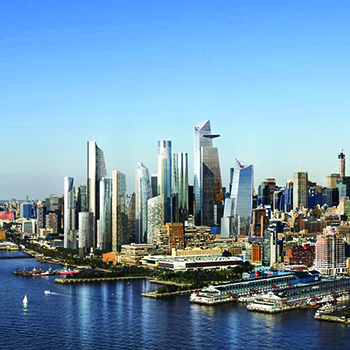Filter by
You must be a CTBUH Member to view this resource.

10 Hudson Yards
Hudson Yards Tower C, Coach Tower, Hudson Yards South Tower
Building
Completed
2016
Office / Retail
Composite
LEED Platinum BD+C: Core and Shell
267.7 m / 878 ft
52
1
27
166,827 m² / 1,795,711 ft²
You must be a CTBUH Member to view this resource.
You must be a CTBUH Member to view this resource.
Proposed
Construction Start
Completed
Usually involved in the front end design, with a "typical" condition being that of a leadership role through either Schematic Design or Design Development, and then a monitoring role through the CD and CA phases.
The Design Engineer is usually involved in the front end design, typically taking the leadership role in the Schematic Design and Design Development, and then a monitoring role through the CD and CA phases.
The Design Engineer is usually involved in the front end design, typically taking the leadership role in the Schematic Design and Design Development, and then a monitoring role through the CD and CA phases.
Other Consultant refers to other organizations which provided significant consultation services for a building project (e.g. wind consultants, environmental consultants, fire and life safety consultants, etc).
These are firms that consult on the design of a building's façade. May often be referred to as "Cladding," "Envelope," "Exterior Wall," or "Curtain Wall" Consultant, however, for consistency CTBUH uses the term "Façade Consultant" exclusively.
You must be a CTBUH Member to view this resource.
Usually involved in the front end design, with a "typical" condition being that of a leadership role through either Schematic Design or Design Development, and then a monitoring role through the CD and CA phases.
The Design Engineer is usually involved in the front end design, typically taking the leadership role in the Schematic Design and Design Development, and then a monitoring role through the CD and CA phases.
The Design Engineer is usually involved in the front end design, typically taking the leadership role in the Schematic Design and Design Development, and then a monitoring role through the CD and CA phases.
The main contractor is the supervisory contractor of all construction work on a project, management of sub-contractors and vendors, etc. May be referred to as "Construction Manager," however, for consistency CTBUH uses the term "Main Contractor" exclusively.
Other Consultant refers to other organizations which provided significant consultation services for a building project (e.g. wind consultants, environmental consultants, fire and life safety consultants, etc).
These are firms that consult on the design of a building's façade. May often be referred to as "Cladding," "Envelope," "Exterior Wall," or "Curtain Wall" Consultant, however, for consistency CTBUH uses the term "Façade Consultant" exclusively.
Material Supplier refers to organizations which supplied significant systems/materials for a building project (e.g. elevator suppliers, facade suppliers, etc).
2019 CTBUH Awards
5 December 2018 - Awards
28 October 2015 - Event

18 September 2014 | New York City
September 18, 2014. Shanghai, China. James von Klemperer from Kohn Pedersen Fox Associates PC presents at the 2014 Shanghai Conference closing plenary on "Urban Density...
.jpg)
10 January 2017
Jason Gabel, Annan Shehadi, Shawn Ursini & Marshall Gerometta, CTBUH
CTBUH has determined that 128 buildings of 200 meters’ height or greater were completed around the world in 2016 – setting a new record for...

09 March 2020
The opening of Edge, the highest outdoor sky deck in the Western Hemisphere, offering 360-degree views of New York City’s iconic skyline will be celebrated...
10 Hudson Yards is the first to open in the Hudson Yards mega project. It is 52-stories with 1.7 million square feet of commercial office tower. It has a direct access to the High Line and retail connection up to the third floor with LEED Gold certification with storm proof systems, co-generation, thermal micro-grid, efficient air flow systems, advanced lighting controls, equipped with under-floor or overhead air distribution, central chilled water plant, water harvesting.
2019 CTBUH Awards
.jpg)
10 January 2017
Jason Gabel, Annan Shehadi, Shawn Ursini & Marshall Gerometta, CTBUH
CTBUH has determined that 128 buildings of 200 meters’ height or greater were completed around the world in 2016 – setting a new record for...

22 October 2015
Jay Cross, Hudson Yards
Hudson Yards is the largest private real estate development ever undertaken in the United States. The site, built over a working rail yard, will eventually...

22 October 2015
Marianne Kwok, Kohn Pedersen Fox Associates
Hudson Yards is a mixed-use development built over rail yards on the west side of New York’s Manhattan Island. As the largest real estate project...
5 December 2018
These projects will be represented at the CTBUH 2019 Tall + Urban Innovation Conference, where they will compete in real time for winning distinctions in each category.
28 October 2015
CTBUH 2015 delegates toured City Point Complex, Barclays Center, and 461 Dean Street which have impacted the cityscape of Brooklyn.
28 October 2015
CTBUH 2015 delegates toured High Line, which have significantly changed the urban landscape of New York City, from its history to its near-future.
28 October 2015
CTBUH 2015 delegates toured the Hudson Yards develoment which is the largest private real estate development in the history of the United States.
27 October 2015
The Hudson Yards Networking Reception took place on Tuesday evening in the incredible Time Warner Center, offering great views of Columbus Circle at the corner of Central Park.
Subscribe below to receive periodic updates from CTBUH on the latest Tall Building and Urban news and CTBUH initiatives, including our monthly newsletter. Fields with a red asterisk (*) next to them are required.
View our privacy policy